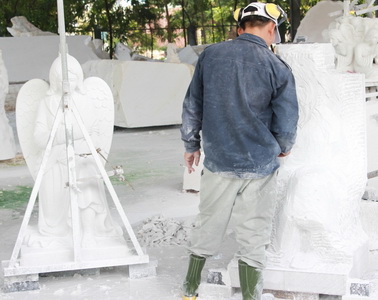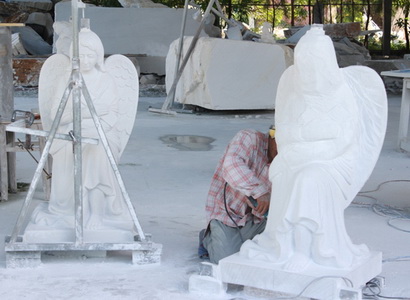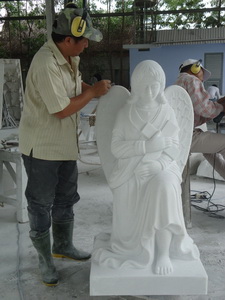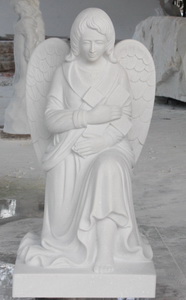Basis Process of Stone Carving
Stone carving is the process used by an artist to create a statue. Stone comes in many varieties, providing artists with abundant choices in color, quality and relative hardness. The softer the stone, the easier it is to work with. Soap stone such as chalk, soapstone, pumice is the softest one, easily carved with found items such as harder stone or even the fingernail. Stones such as the alabaster, limestone, sandstone or marble come in the middle of hardness, which can be worked using abrasives and simple iron tools. The hardest and most durable is igneous rock, including granite, diorite, and basalt, which is difficult to carve even with iron, or tungsten carbide tipped tools.
In addition to traditional tools such as point chisels, tooth chisels, flat straight chisels and hammers, artists also use many power tools such as pneumatic hammers, diamond-bladed angle-grinders and numerous hand drills.
An artist can develop a statue with the direct carving method where he carves directly on the chosen stone mainly based on the natural quality and shape of the material and sketches or drawings. However, to produce high quality statues, in most of the cases, artists chose the indirect method which involves a detailed scale or full size model (first made in clay and then cast into plaster or wax or resin) to copy in stone with the following basic steps:
Roughing Out the Stone
After selecting the right stone, the artist usually begins by knocking off, or "pitching", large portions of unwanted stone with a point chisel, a wedge-shaped pitching chisel or a mason’s driving hammer. The edge of the pitching tool is placed against a selected part of the stone and swung at with the hammer using a controlled stroke.
Refining the Shape
Once a rough shape of the statue emerges, the artist makes precise markings with charcoal or pencil on the stone and uses other tools such as a toothed chisel or claw chisel to refine it, creating texture within the work. At this point, the artist works with shallower and more subtle strokes.
Detailing and Finishing stage
When the general shape of the statue has been formed, the artist uses rasps and rifflers to enhance the shape into its final form. With broad and sweeping strokes, the artist removes excess stone as small chips or dust. A riffler, a smaller variation of the rasp, is used to create delicate details such as folds of clothing or locks of hair.
Polishing
Finally, the statue is polished with a sand paper or sand cloth to emphasize the color of the stone, reveals patterns in the surface and adds a shine. Artists also use diamond abrasives to create highly reflective surfaces.
|
Roughing out the stone |
Refining the shape |
Detailing and Finishing |
Polishing |
Finished statue |













